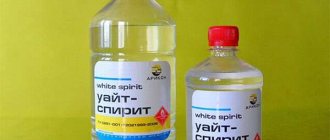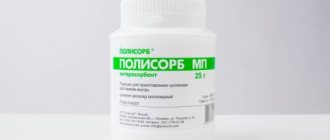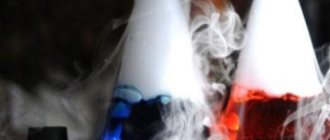Test with answers: “Poisoning”
1. What is bacteremia typical for? a) Poisoning with Staphylococcus aureus + b) Botulism c) Aflotoxicosis
2. What does solanine contain? a) in wild herbs b) in weeds of cereal crops c) in sprouted potatoes +
3. What are the main reasons for the significant accumulation (due to intensive reproduction) of bacteria in food products? a) non-compliance with product proximity when storing products and violation of personal hygiene rules by food facility personnel b) microbial contamination of primary food raw materials and finished products c) non-compliance with temperature conditions and shelf life, non-compliance with the established recipe +
4. Which doctors take part in the medical examination of persons entering work in the catering department? a) Endocrinologist b) Nutritionist c) Therapist, dermatovenerologist +
5. Select from these preventive measures for the prevention of toxic infections which is the main one, determining: a) Correct storage conditions b) Prevention of contamination of food products + c) Compliance with the rules of personal hygiene by catering staff
6. What does Minimata disease mean? a) Poisoning of unknown etiology b) Nitrate poisoning c) Mercury poisoning +
7. Please note what is the most common cause of trichinosis? a) use of contaminated beef in food b) use of contaminated pork in food + c) use of contaminated homemade canned food in food
8. What does amanitin contain? a) Poisonous mushrooms + b) Wild meadow grasses c) Weeds of cereal crops
9. Determine which food poisoning is characterized by the following symptoms: a decrease in granulocytes and hemoglobin, an increase in the number of lymphocytes, damage to myeloid and lymphoid tissue, degeneration and necrosis of the bone marrow: a) Alimentary-toxic aleukia + b) Aspergildotoxicosis c) Botulism
10. Trichinella meat is a ________ product: a) Falsified b) Low nutritional value c) Sanitary hazardous +
11. What products pose an epidemic risk? a) Falsified b) Surrogates c) Poor quality +
12. What is the leading condition in the pathogenesis of food intoxication of microbial etiology? a) Ingestion of the vital activity of a microorganism - exotoxin + b) Massive contamination of the product with microorganisms c) Penetration of the pathogen into the bloodstream
13. Select which of the following food products are most often associated with staphylococcal intoxication: a) Vegetable salads b) Dairy products + c) Canned fish products
14. Waterfowl eggs can cause: a) Botulism b) Aflotoxicosis c) Salmonellosis +
15. What is the most common cause of botulism in modern conditions? a) Ham b) Homemade canned food + c) Meat products
Causes of poisoning
There are many sources of possible intoxication. The reason can be single or several sources. The presence of intoxication is determined by the following signs:
- Using food products that have already passed their expiration date as food. Frozen meat products, seafood, pickles, smoked meats, fermented milk products, and eggs are dangerous.
- Taking food with the wrong storage method. Pathogenic flora develops.
- Intoxication occurs with products stored near chemicals. Washing powder should not be stored near fruit.
- Eating toxic mushrooms and berries. You can even get poisoned from watermelon.
- The culprits in situations where a person is poisoned are often baked goods and confectionery products with a large amount of cream. They can also be expired. Stale salad with sour cream and mayonnaise should be immediately discarded.
- Vegetables and fruits that have been treated with chemicals should not be used for food. They attract with their appearance. Large apples, grated to a shine, should give a good warning.
Poisoning with pesticides
Intoxication with chemical poisons is the result of irresponsible failure to comply with instructions on how to handle them. Frequent poisonings include poisoning with phosphorus compounds that enter the body through the air-respiratory channels, products treated with them, methanol, and paint containing poisons.
Signs appear immediately after a quarter of an hour or an hour. They are expressed in excessive secretion of saliva, phlegm, sweating, rapid, intermittent, shallow breathing. Then the onset of seizures is possible. In the absence of first aid, muscle paralysis and death occur.
First aid for poisoning with chemical toxins is to call emergency medical help. Carry out a quick gastric lavage and use saline laxatives.
Drug poisoning
A common variant of drug poisoning. Medicines help in therapy, but at the same time, if the dosage is exceeded, they can lead to intoxication of the body.
The manifestations are different. Depends on the type of medicine and the amount exceeded. For example, with an increased dose of sleeping pills, a strong inhibition of the nervous system occurs at a deep level. In this case, respiratory paralysis is likely to occur, resulting in death.
What tests need to be taken
After contacting a specialized medical institution, it is necessary to submit urine, other fluids and tissues for tests that will help in making the correct diagnosis. Submission of biomaterials for research allows us to judge the dynamics of the process. Timely examination influences treatment tactics. It allows you to establish the exact cause of intoxication and select the right treatment, which prevents you from wasting precious time. The following studies are usually carried out:
- general blood analysis,
- bacteriological examination,
- biochemical blood test,
- general urine analysis.
A general blood test in case of poisoning allows one to judge the ratio of blood cells, hemoglobin content, the ratio of cellular elements to plasma (hematocrit), and erythrocyte sedimentation rate. Thanks to this, it is possible to judge the presence of an inflammatory or infectious process. In this case, a shift in the leukocyte formula to the left is characteristic, the appearance in the blood of a large number of young (immature) forms of leukocytes, leukocytosis (increased content of leukocytes), acceleration of ESR. For chronic intoxication, anemia is likely to develop. This is judged by the hemoglobin content. The lower limit of this indicator is 120 g/l.
We recommend reading
- Types of diagnosis of botulism
- First aid and further treatment of tangerine intoxication
- Is it possible to overdose on Regidron?
Take the material as follows:
- Pre-treat the ring finger with cotton wool and an antiseptic.
- Next, wipe off the remaining antiseptic with another napkin or cotton wool.
- A scarifier is used to make a puncture, having previously driven the blood to the fingertip.
- Collection of material.
This procedure is often used in clinical practice.
Bacteriological research
Bacteriological research makes it possible to identify the causative agent of toxic infection with high accuracy. This study is carried out in several variations:
- By inoculating feces onto nutrient media. Allows you to detect the suspected causative agent of an infectious disease.
- Inoculation of gastric lavage waters on nutrient differential media (blood agar, etc.). It is carried out in specialized microbiological laboratories. Is a more accurate method.
If a specific infectious disease is suspected, culture is carried out on selective media that contain substances used by bacteria of certain types and suppress the growth of other microorganisms. These include peptone water, yolk-salt agar, Rappoport media, etc.
Blood chemistry
The biochemical blood test used for poisoning varies depending on the cause of intoxication. Biochemical blood testing is characterized by high variability of the required markers (several hundred).
In case of food intoxication, a study is usually carried out to detect the amount of fibrinogen and C-reactive protein of acute phase proteins.
Detoxification function is one of the main tasks of the liver. During poisoning, the functioning of the liver changes. Damage to its cells is possible, which is accompanied by the release of cytoplasmic enzymes and other substances into the bloodstream. This is used in diagnostics. Attention is paid to the so-called transferases: aspartate aminotransferase and alanine aminotransferase. The content of bilirubin fractions is taken into account. In total, these indicators allow us to judge the functioning of the liver.
The presence of renal dysfunction allows us to determine the content of creatinine and urea. If the excretory function of the kidneys is impaired, they increase. This is observed as a result of damage to the kidney parenchyma or filtration apparatus.
General urine analysis
Such a study allows us to judge the functioning of the kidneys. Allows you to establish chronic and acute renal failure. In cases of severe poisoning with heavy metals or other toxins, nephropathy is likely to develop. Kidney health is important for detoxification, especially with forced diuresis and fluid therapy. In this case, an important indicator is the volume of urine, its color, density, content of cellular elements, creatinine and glomerular filtration rate.
What information is missing from the article?
- List of effective medications
- A detailed overview of traditional methods of treatment
- Professional opinion of a specialist
- Detailed review of antidotes
Prevention
The above describes the main existing types of intoxication. It is impossible to say which is less likely to have consequences. This is always unfavorable for the body. We must try to exclude all possibilities of its occurrence by following preventive measures.
A simple, familiar procedure is washing your hands before eating. After severe intoxication, a person already develops a reflex: wash your palms before eating, before preparing food. When contacting fish and meat products, be careful. It is forbidden to eat unprocessed fish, meat, eggs. For meat products there is a special cutting board. Fermented milk compositions must be fresh and stored in the refrigerator. Wash vegetables and fruits thoroughly.
Diet after illness
After poisoning, no matter what type it is, it is recommended to follow a diet. Start with simple, healthy food: porridge in water, steamed vegetables, oven-baked fish, chicken broth and other dietary meats. Suitable liquids include compotes, juices, weakly brewed tea, vegetable stew, and chicken broth. Doctors advise preparing raisin compotes. It contains potassium in sufficient quantities. When drinking the drink, the body will recover faster and return to normal.
It is prohibited to use fruits and vegetables raw. The best option: bake, steam. During the week, it is recommended to eat the foods listed above. You should return to your usual diet gradually, without overloading the body with extra calories.
First aid for poisoning
In case of mild food intoxication, support begins at home, with those available medications that are usually present in the home medicine cabinet. If it is severe, you should not engage in amateur activities, you need to promptly call a medical ambulance. When it comes to pregnant women, small children, and the elderly, you should rely only on professional help and medical personnel.
The first thing you need in case of poisoning is to lavage the stomach area. This will help remove pathogenic microbes that have entered the body. To carry out the procedure, you should use just water. The use of potassium permanganate for the rinsing solution is approved. The goal is to induce vomiting, repeated a certain number of times. Additionally, a cleansing enema is given. The above first aid method is suitable for an adult. If a child is poisoned, first aid is a little different. Non-carbonated mineral water is offered. Juices diluted with clean drinking water are allowed. To stop dehydration resulting from poisoning, when the vomiting process is completed, it is recommended to drink Regidron and salt solutions.
After vomiting, adults are recommended to use activated charcoal diluted with water. Use orally with small sips for detoxification. To calculate the dosage, the following ratios are used: 1 table. per 10 kg of weight. To prevent a state of water shortage, it is allowed to drink boiled water in small portions. This eliminates the gag reflex.
In case of further deterioration of health, call emergency assistance immediately. Intoxication affects the liver, yellowing of the skin is possible.
In a medical institution, special tests are carried out to help identify the source, which contributes to effective treatment that minimizes the symptoms and consequences of poisoning. Having identified the real source, consider the problem solved.
Signs of poisoning
After the passage of harmful microorganisms in the gastrointestinal tract, the first symptoms are detected quickly. It takes 30 minutes, and then the discomfort quickly intensifies within a day or two. What is happening is dangerous for the poisoned person and others. It is necessary to take timely measures: the sooner, the better. No need to tighten. It is better to seek professional medical help as soon as possible.
It is possible to recognize food poisoning and understand its presence by the following signs:
- Rapid increase in body temperature.
- Lethargic, apathetic state.
- Dizziness, the appearance of “black dots” before the eyes.
- Pain in the gastrointestinal tract, flatulence.
- Constantly, periodically nauseous.
- Chills, fever.
- Hypotension.
- Gastrointestinal disorder.
- Coma.
There are different degrees of poisoning, from which the above symptoms appear. There are nuances that must be taken into account. For example, when diarrhea occurs on the same day, immediately after eating low-quality food. When symptoms appear after several days, a bacterial infection of the intestines has developed. This way you can distinguish different types of intoxication and find out the origin of the source.
When eating a difficult process, dehydration occurs. Accompanied by signs:
- Rapid, causeless fatigue.
- An unpleasant feeling of dryness in the mouth.
- Dizziness.
- Diarrhea.
- Fever (not always).
If you notice the presence of the first signs, do not ignore them, hoping that “they will go away on their own.” Complications are likely to occur that will negatively affect the functioning of the body and well-being. It should be treated on time.
Symptoms of severe poisoning
If it is difficult to determine that the product is spoiled, you should not eat it; a similar warning applies to confectionery products when it is impossible to determine the presence of infection. Often the staphylococcus found inside causes poisoning. The first signs appear - the urge to vomit, heaviness in the head, indigestion.
Symptoms of fish poisoning are: shortness of breath, nausea.
If you eat a fermented milk product of poor quality in the summer, symptoms begin within half an hour. Expressed by cramps, stomach pain, diarrhea.
The most dangerous infection that can cause death is intoxication from meat products and semi-finished products. Delayed or unprovided assistance can lead to death. The poisoned person develops a fever, chills, vomits, there is a disruption in breathing and heart contractions, and there is an upset bowel movement. The temperature may rise sharply. It is recommended to take antipyretic drugs.
Mushroom poisoning is considered the most dangerous and common. The intoxication period ranges from twenty minutes to a couple of hours. Signs include: nausea, blood in the stool, diarrhea, suffocation, lethargy, drop in blood pressure, weakness, atony. There may be a delusional state. Mushrooms should be treated with extreme caution. This is the most common provocateur product.
Alcohol poisoning occurs. Here the signs appear instantly as loss of consciousness, fever, chills, increased sweating, and distortion of speech.
Among the leaders in toxicity are also synthetic additives that are part of some products. Here, allergic reactions may occur in the form of swelling, rashes, skin itching, and burning. Accompanying this is intestinal upset.
You should be careful when consuming canned food. Intoxication with them is quite likely. The results of poisoning are extremely severe.
Carbon monoxide poisoning
Possible carbon monoxide toxicity. Happens in production conditions for the synthesis of organic matter when there is insufficient ventilation of the room or home due to leakage of lighting gas, due to the furnace dampers being closed too early. With this type of poisoning, severe pain in the head, heaviness, and nausea appear.
If you stay in a room with toxic air poisoned by carbon monoxide, the situation gets worse. Shortness of breath appears, loss of consciousness, and convulsions are possible. If measures are not taken, death will occur. It is necessary to immediately provide first aid to the person and take him out into the open from the premises. Getting clean air is the first step to help. If necessary, perform artificial respiration. When all else fails, the poisoned person must be sent to hospital.











